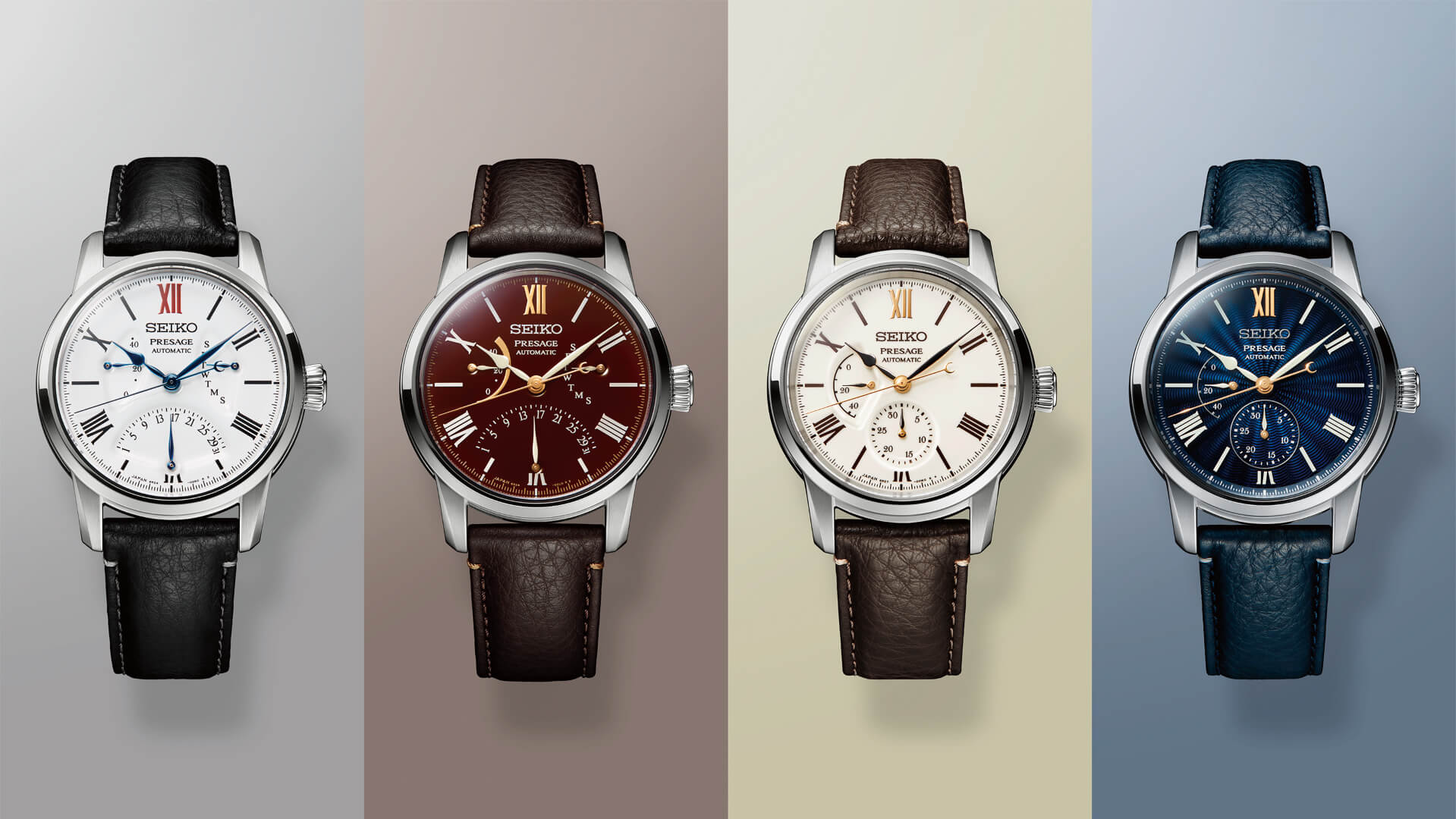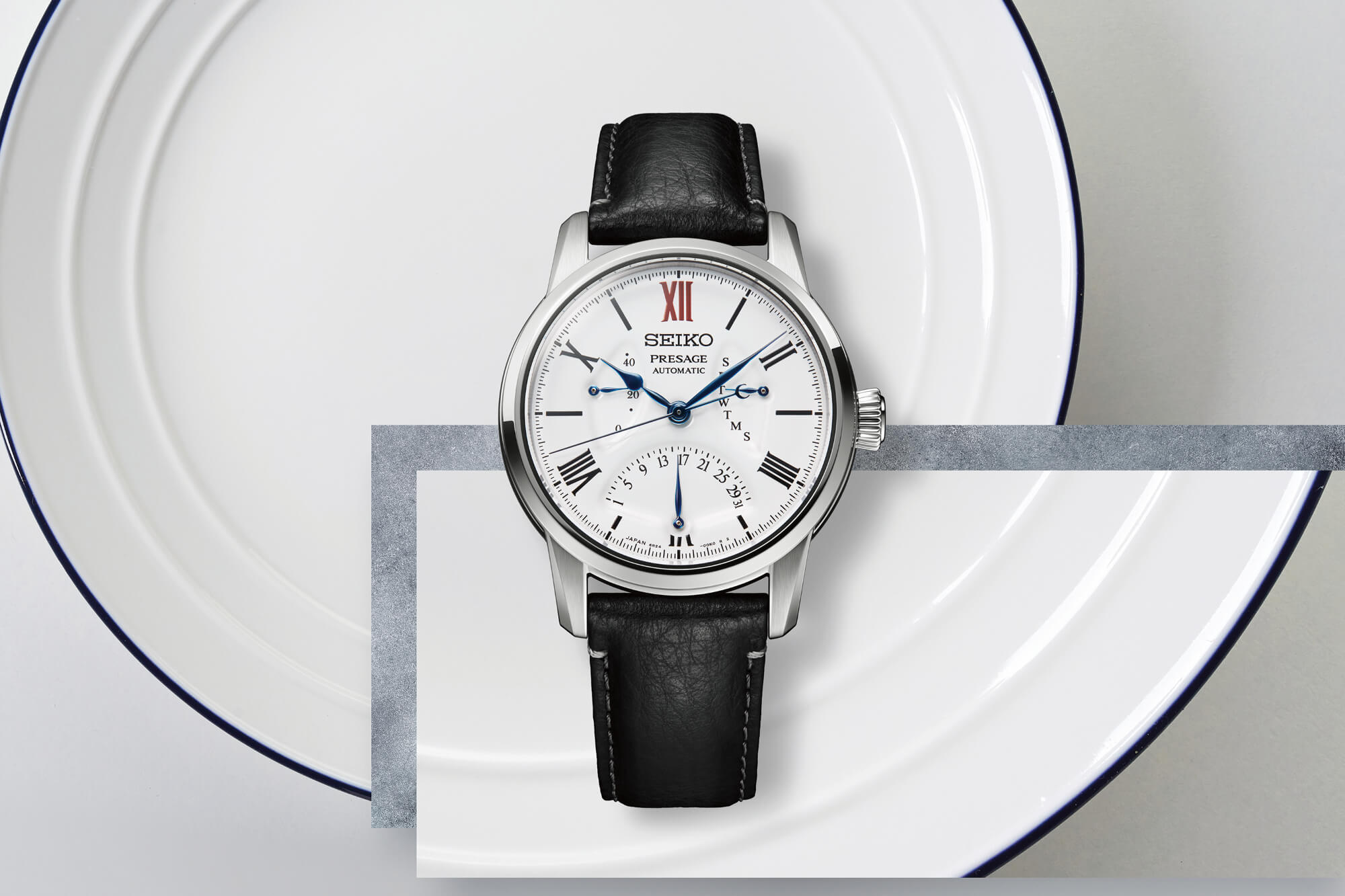 Not ones to miss an anniversary, Seiko has unleashed another tetrad of fancy-dialed Presage watches upon the world. To celebrate its 110th year, Seiko has introduced two pairs of watches, each with different dial materials. Though it will hardly be a surprise, these are not the only watches Seiko has released to celebrate this decidedly unimportant anniversary. It’s already shared a Prospex diver, a King Seiko, and another enamel-dialed Presage as part of its commemoration. While Seiko capitalizes on every single opportunity for inspiration and jubilation, these Presage watches do not present entirely new models, but rather intriguing (and limited) new dials for two existing models.
Not ones to miss an anniversary, Seiko has unleashed another tetrad of fancy-dialed Presage watches upon the world. To celebrate its 110th year, Seiko has introduced two pairs of watches, each with different dial materials. Though it will hardly be a surprise, these are not the only watches Seiko has released to celebrate this decidedly unimportant anniversary. It’s already shared a Prospex diver, a King Seiko, and another enamel-dialed Presage as part of its commemoration. While Seiko capitalizes on every single opportunity for inspiration and jubilation, these Presage watches do not present entirely new models, but rather intriguing (and limited) new dials for two existing models.
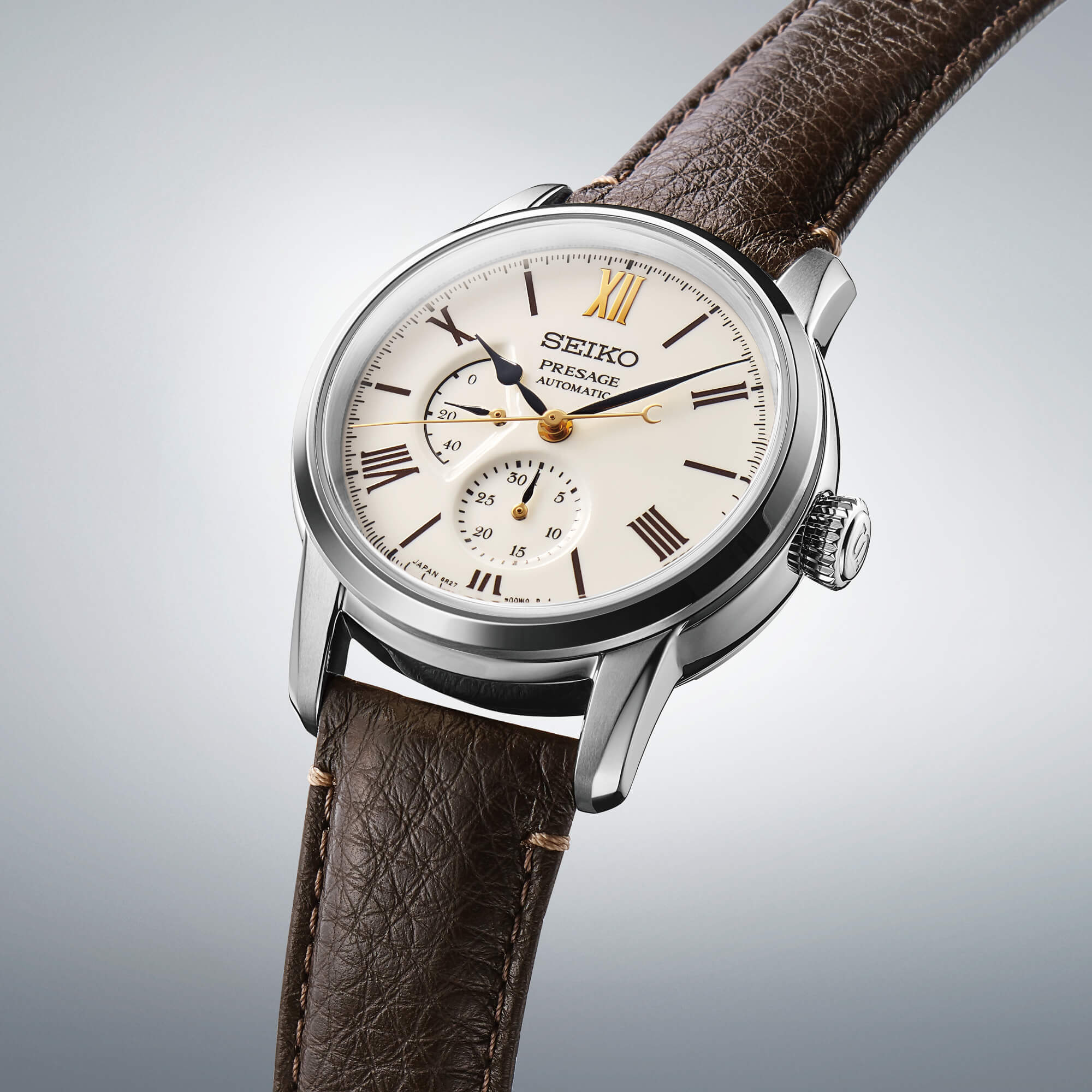
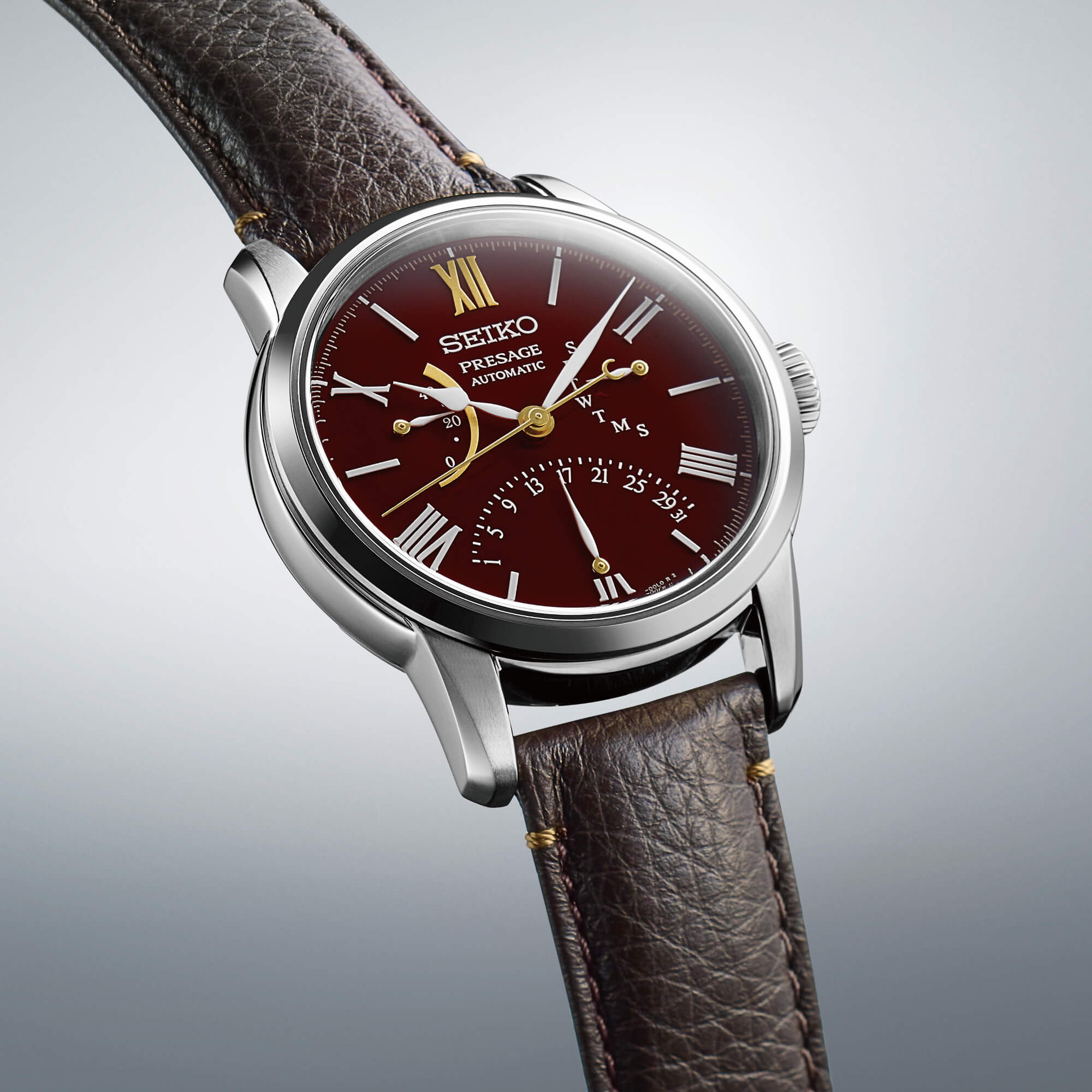 The four new models all feature what has become the classic Presage case. With a blend of polished and brushed surfaces, these are hardly the dynamic cases of some of Seiko’s dive watches but are elegant in their relative simplicity. A plain round case with relatively straight lugs, the only real adornment is the polished chamfer that expands along the lugs. A simple and seemingly well-sized crown has an ‘S’ embossed, while the screw-down caseback has a sapphire crystal putting the movement on display. The retrograde day and date models are 40.2mm in diameter with a height of 12.8mm and lug-to-lug of 48mm, while the subsidiary date models run 40.6mm, 14.1mm, and 49.1mm. The watches are all paired with 20mm padded leather straps coordinated to the dials, with folding deployant clasps. While Seiko doesn’t really make a big deal of it, I think it is worth noting that the leather for the straps is sourced from Leather Work Group-certified tanneries, ensuring that it is responsibly made and sustainable. The watches all feature double-domed sapphire crystals and 100 meters of water resistance.
The four new models all feature what has become the classic Presage case. With a blend of polished and brushed surfaces, these are hardly the dynamic cases of some of Seiko’s dive watches but are elegant in their relative simplicity. A plain round case with relatively straight lugs, the only real adornment is the polished chamfer that expands along the lugs. A simple and seemingly well-sized crown has an ‘S’ embossed, while the screw-down caseback has a sapphire crystal putting the movement on display. The retrograde day and date models are 40.2mm in diameter with a height of 12.8mm and lug-to-lug of 48mm, while the subsidiary date models run 40.6mm, 14.1mm, and 49.1mm. The watches are all paired with 20mm padded leather straps coordinated to the dials, with folding deployant clasps. While Seiko doesn’t really make a big deal of it, I think it is worth noting that the leather for the straps is sourced from Leather Work Group-certified tanneries, ensuring that it is responsibly made and sustainable. The watches all feature double-domed sapphire crystals and 100 meters of water resistance.
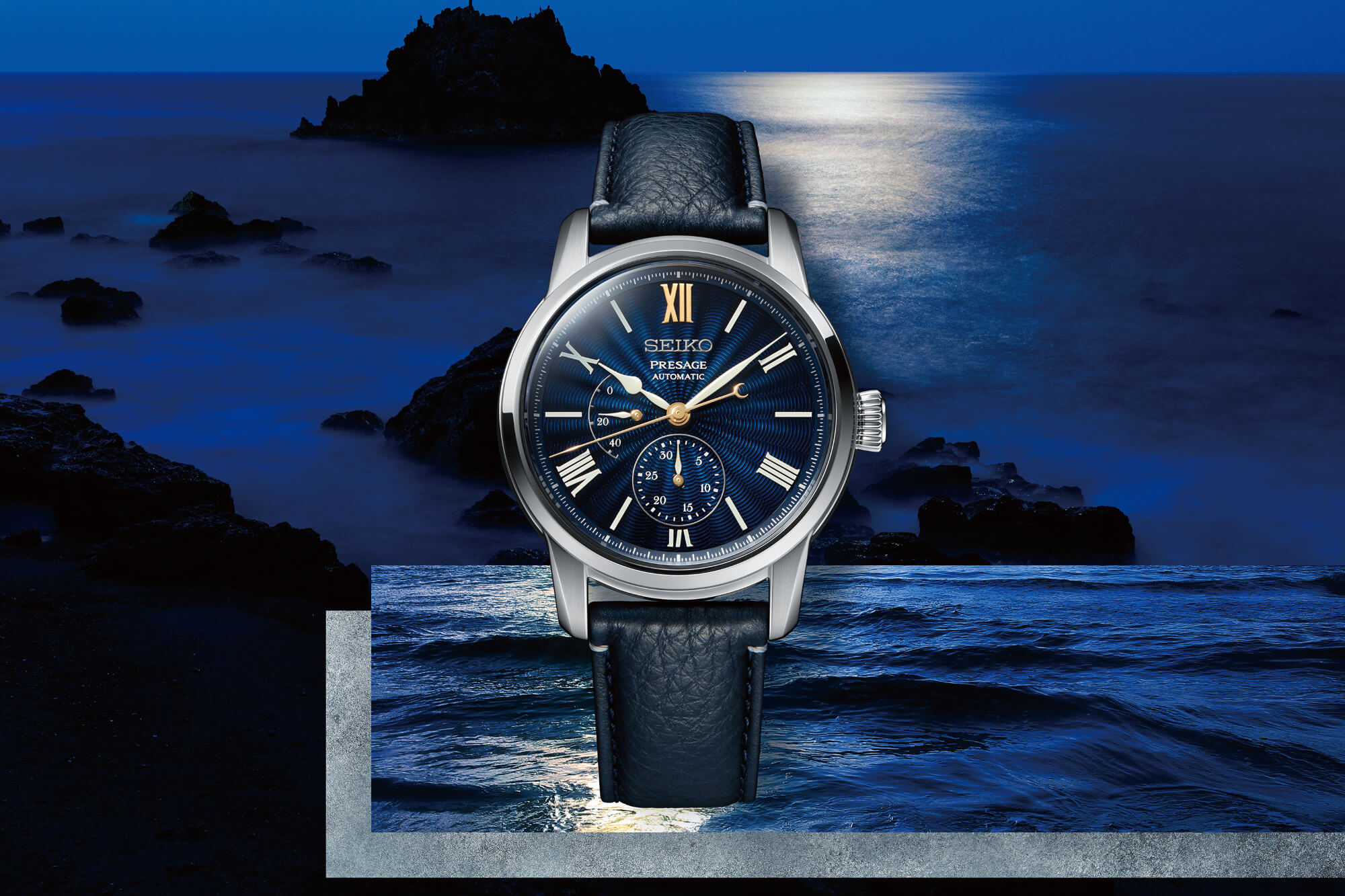
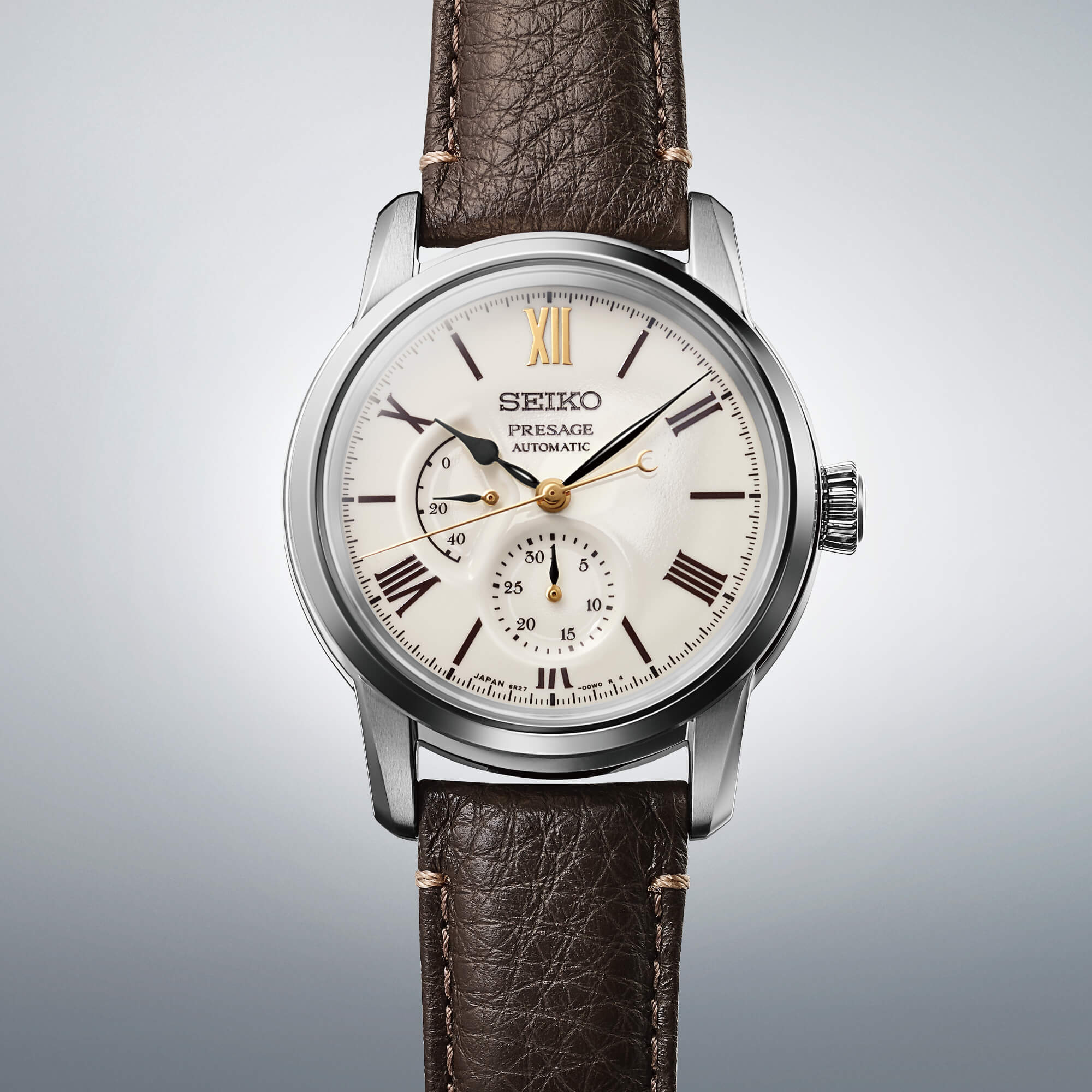 The range of the four dials is really what captures the eye here. As mentioned, the dials come in two variants, all of which share the same handset and alternating roman numeral and baton indices (the red and blue dials both feature applied white markers, while the other two are printed). The first variant offers a triple retrograde display of the day, date, and power reserve, while the second offers a subsidiary date and a retrograde power reserve indicator. For the former, you’ll have the option either the classic white enamel SPB393 with beautifully sunken retrogrades and blued hands; or the more exciting red Urushi lacquer dial SPB395 with white hands; according to Seiko, the color of the lacquer is inspired by the streetscape of Kanazawa, a town famous for the lacquer craft. With the other variant, you can choose either the creamy Arita porcelain dial SPB397 with black hands and gold accents, inspired by the stone field in the town of Arita; or the blue Shippo enamel dial SPB399, with white hands, gold accents, and added texture, all reportedly inspired by oceans. (Not a specific one, just all of them, or maybe the general idea of them.)
The range of the four dials is really what captures the eye here. As mentioned, the dials come in two variants, all of which share the same handset and alternating roman numeral and baton indices (the red and blue dials both feature applied white markers, while the other two are printed). The first variant offers a triple retrograde display of the day, date, and power reserve, while the second offers a subsidiary date and a retrograde power reserve indicator. For the former, you’ll have the option either the classic white enamel SPB393 with beautifully sunken retrogrades and blued hands; or the more exciting red Urushi lacquer dial SPB395 with white hands; according to Seiko, the color of the lacquer is inspired by the streetscape of Kanazawa, a town famous for the lacquer craft. With the other variant, you can choose either the creamy Arita porcelain dial SPB397 with black hands and gold accents, inspired by the stone field in the town of Arita; or the blue Shippo enamel dial SPB399, with white hands, gold accents, and added texture, all reportedly inspired by oceans. (Not a specific one, just all of them, or maybe the general idea of them.)
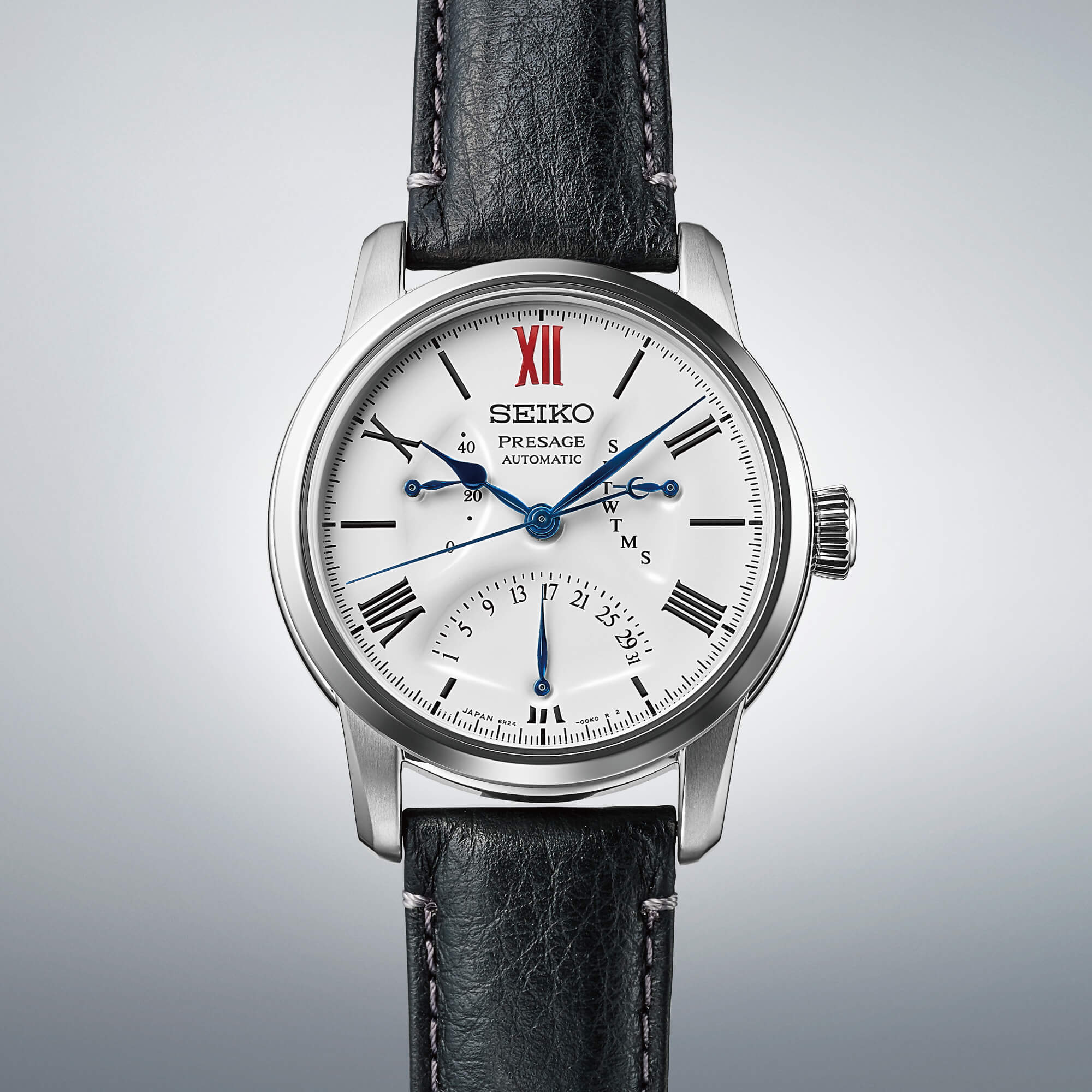
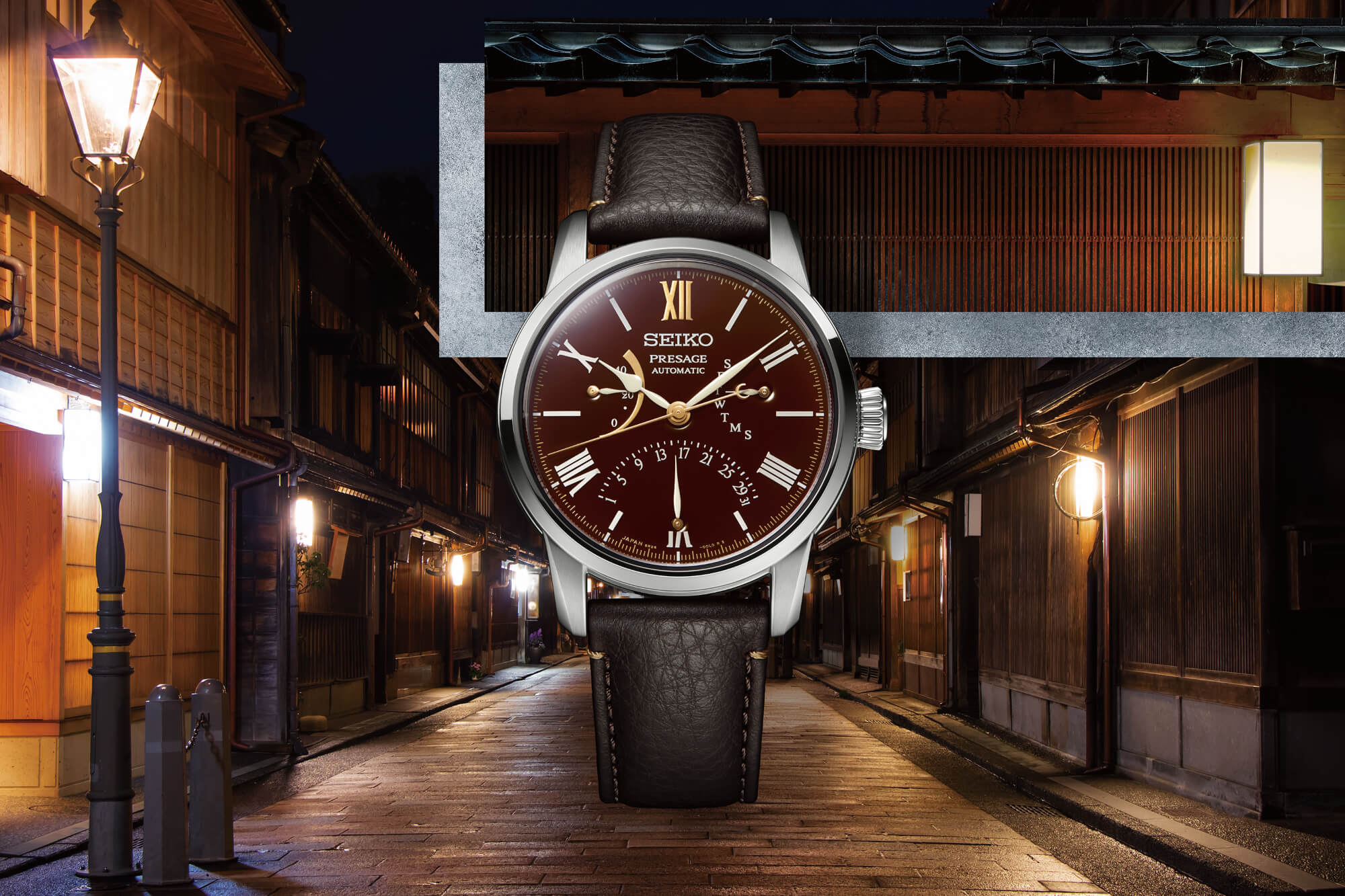 The watches are all driven by Seiko’s venerable 6R series, visible through the display casebacks. Frankly, I would’ve foregone the sapphire casebacks if it would’ve saved some thickness (especially on the subsidiary dial models, but here we are. The day-date models run the uncommon 6R24 and the subsidiary date models run the 6R27. Both operate at 28,800 vph with power reserves of 45 hours, though the 6R24 boasts two more jewels than that 6R27 (31 versus 29). They all are regulated to -15/+25 seconds per day, which is what it is, I suppose. This entire family of movements has been around for some time, and while you may not see these two versions as often as others, you can be assured that they’re just as reliable.
The watches are all driven by Seiko’s venerable 6R series, visible through the display casebacks. Frankly, I would’ve foregone the sapphire casebacks if it would’ve saved some thickness (especially on the subsidiary dial models, but here we are. The day-date models run the uncommon 6R24 and the subsidiary date models run the 6R27. Both operate at 28,800 vph with power reserves of 45 hours, though the 6R24 boasts two more jewels than that 6R27 (31 versus 29). They all are regulated to -15/+25 seconds per day, which is what it is, I suppose. This entire family of movements has been around for some time, and while you may not see these two versions as often as others, you can be assured that they’re just as reliable.
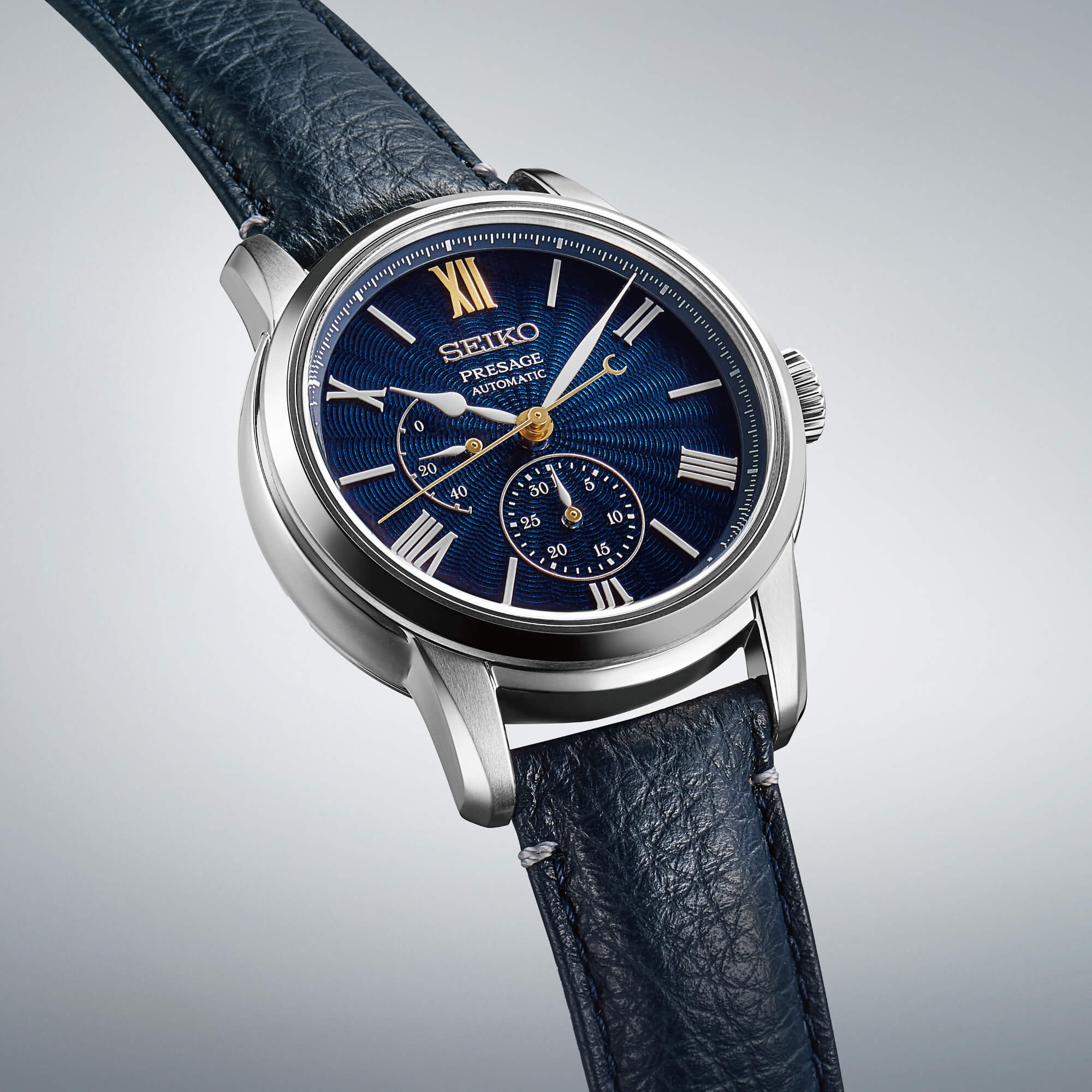
The Shippo enamel is the watch that really stands out here for me. While its inspiration is shockingly broad for a brand that seems to be able to find very specific inspiration for very generic colors, the added rosette dial texture and the combination of blue, white, and gold just do it for me. While some other recent releases have seen price jumps relative to their similar forebears, these watches actually stay right on track with previously released versions. The white enamel SPB393 is priced at $2,000 USD and limited to 1,500 pieces; the red Urushi lacquer SPB395 is priced at $1,850 USD and limited to 1,500 pieces; the cream Arita porcelain SPB397 is priced at $1,850 USD and limited to 1,500; and The blue Shippo enamel SPB399 is priced at $2,050 USD and limited to 800 pieces. All four models will be available in June of 2023. For more information, please visit the brand’s website.

